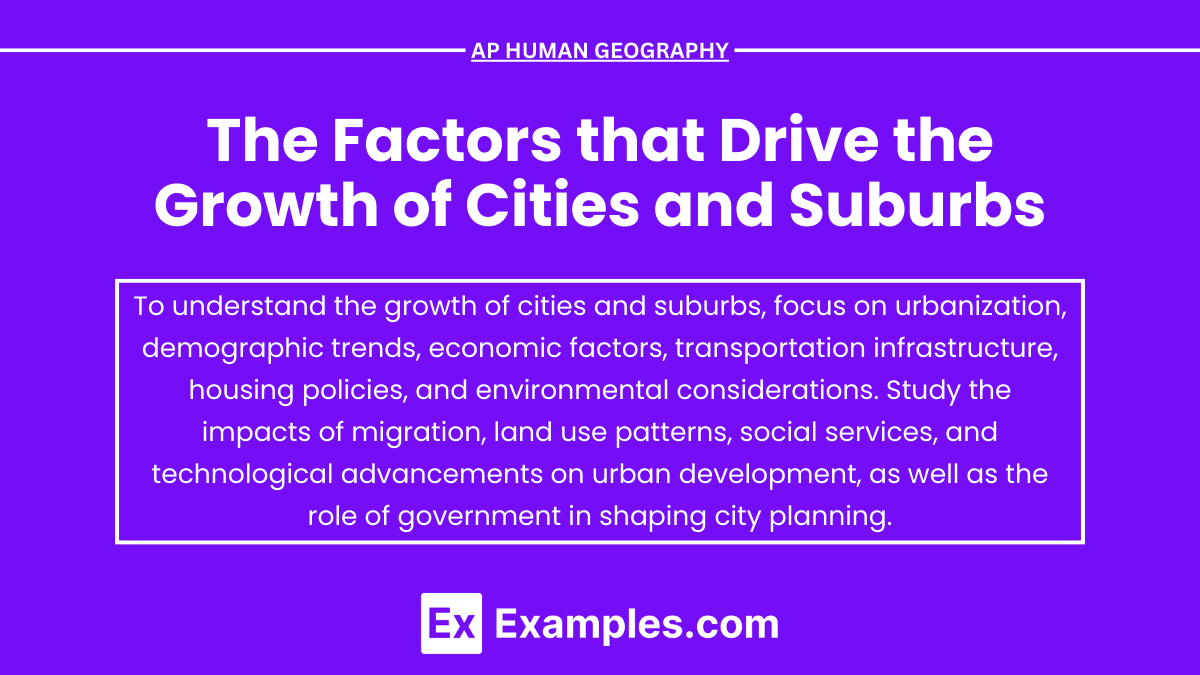The growth of cities and suburbs is influenced by a complex interplay of economic, social, technological, political, and environmental factors. As industrialization and globalization reshape economies, urban areas become centers of job opportunities and cultural amenities, attracting populations from rural regions. In AP Human Geography, innovations in transportation and communication further facilitate this migration, while government policies and resource availability play crucial roles in shaping urban landscapes. Understanding these dynamics is essential for analyzing contemporary urbanization trends and their implications for society and the environment.
Free AP Human Geography Practice Test
Learning Objectives
In studying "The Factors that Drive the Growth of Cities and Suburbs," you should aim to understand the interplay between economic, social, technological, political, and environmental factors that contribute to urbanization and suburban expansion. Focus on how industrialization, globalization, and population dynamics influence migration patterns. Analyze the impact of transportation advancements, government policies, and cultural amenities on urban growth. Additionally, explore the consequences of urban sprawl and gentrification, and evaluate the sustainability challenges faced by growing cities and suburbs.
Factors Driving the Growth of Cities and Suburbs
The growth of cities and suburbs is influenced by a complex interplay of factors that shape urbanization patterns. Economic opportunities play a central role, as urban areas tend to offer a greater variety of jobs and industries, attracting individuals in search of employment and better living standards. Migration, both from rural areas and international sources, further fuels urban growth, contributing to demographic diversity and vibrancy. Transportation developments, including improved infrastructure and highway systems, facilitate easier commuting and encourage suburban expansion.
Economic Factors
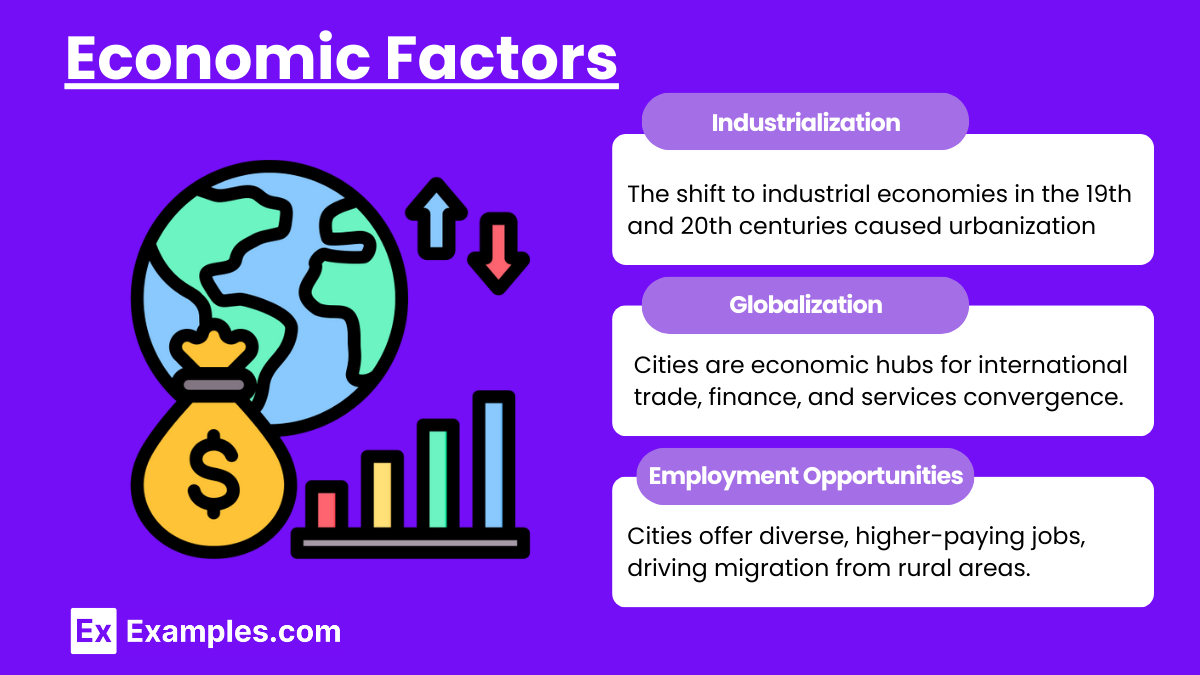
Industrialization: The shift from agrarian economies to industrial economies during the 19th and 20th centuries led to urbanization. Factories attracted workers, creating job opportunities in cities.
Globalization: Cities often serve as economic hubs where international trade, finance, and services converge. The growth of multinational corporations has further centralized economic activities in urban areas.
Employment Opportunities: Cities provide diverse job options, often in higher-paying sectors, prompting migration from rural to urban areas.
Social Factors
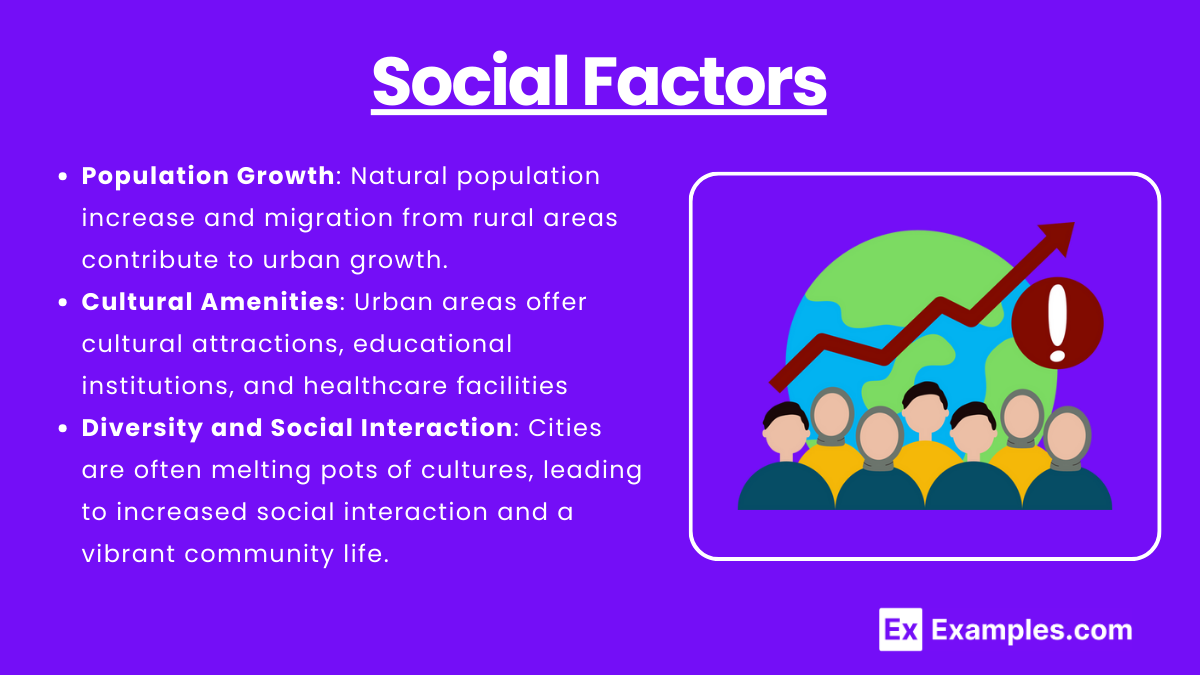
Population Growth: Natural population increase and migration from rural areas contribute to urban growth. The promise of better living conditions and amenities attracts individuals and families.
Cultural Amenities: Urban areas offer cultural attractions, educational institutions, and healthcare facilities, making them desirable for residents seeking a higher quality of life.
Diversity and Social Interaction: Cities are often melting pots of cultures, leading to increased social interaction and a vibrant community life.
Technological Factors

Transportation Innovations: Advances in transportation (e.g., railroads, highways) facilitate movement into and out of urban areas. The development of public transit systems allows for suburban expansion.
Communication Technologies: Improvements in communication, such as the internet, enable remote work and can influence where people choose to live, contributing to suburban growth.
Political and Policy Factors
Government Policies: Zoning laws, infrastructure investments, and tax incentives can influence urban and suburban development. Policies that favor suburban development can lead to urban sprawl.
Urban Renewal and Redevelopment: Governments often invest in the revitalization of urban areas to attract residents and businesses, which can lead to gentrification.
Environmental Factors
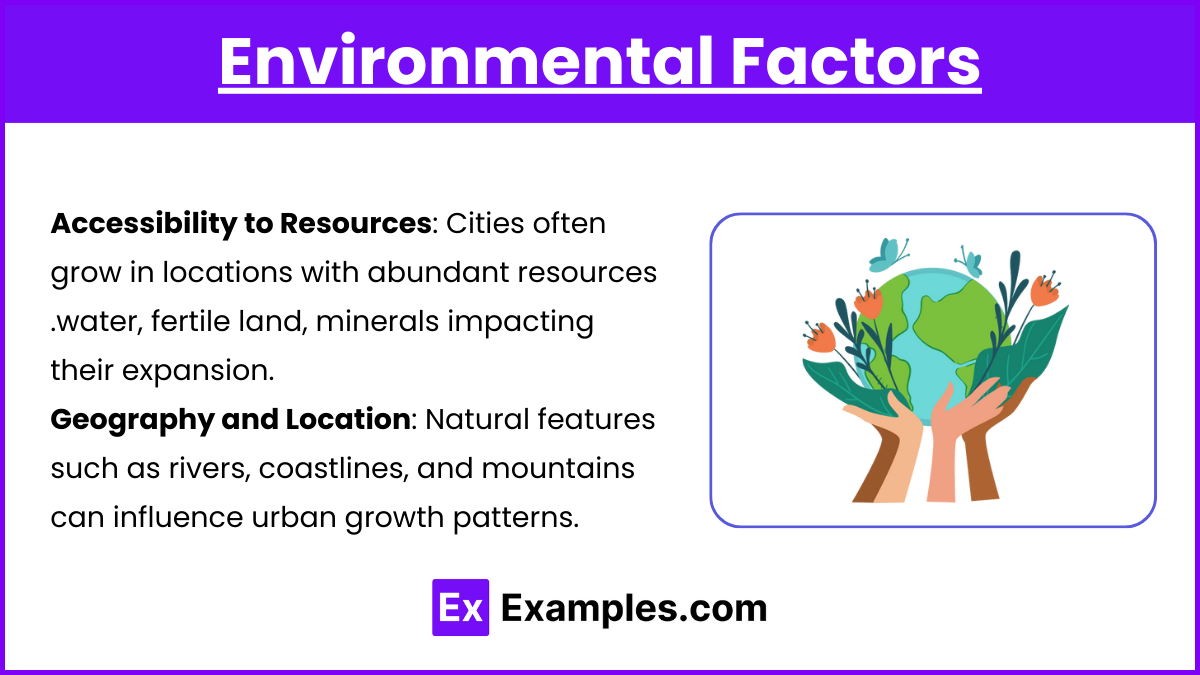
Accessibility to Resources: Cities often grow in locations with abundant resources (water, fertile land, minerals), impacting their expansion.
Geography and Location: Natural features such as rivers, coastlines, and mountains can influence urban growth patterns, leading to concentrated development in favorable areas.
Suburbanization
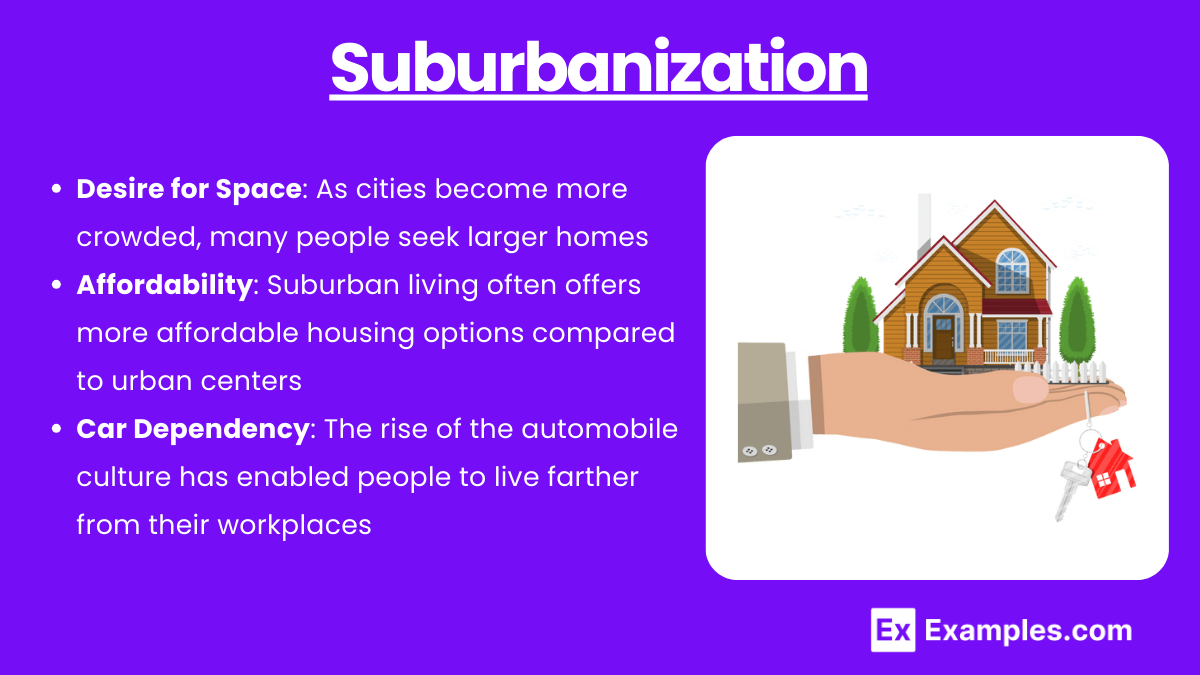
Desire for Space: As cities become more crowded, many people seek larger homes and yards, leading to the growth of suburbs.
Affordability: Suburban living often offers more affordable housing options compared to urban centers, drawing families and individuals.
Car Dependency: The rise of the automobile culture has enabled people to live farther from their workplaces, facilitating suburban growth.
Examples
Example 1: Economic Opportunities
Cities often experience growth due to the concentration of economic activities. For example, during the Industrial Revolution, cities like Manchester in England and Detroit in the United States expanded rapidly as factories attracted workers seeking employment. This trend continues today, as urban areas become hubs for various industries, including technology and finance, providing diverse job opportunities that draw individuals from rural areas.
Example 2: Population Migration
The migration of people from rural to urban areas significantly contributes to urban growth. In countries like India and Brazil, rural residents move to cities in search of better living conditions, education, and healthcare. This influx can lead to rapid population increases in urban centers, as seen in cities like Mumbai and São Paulo, where millions migrate each year, seeking improved economic prospects and a higher quality of life.
Example 3: Transportation Infrastructure
Advances in transportation technology play a crucial role in urban and suburban development. The expansion of highways and public transit systems, such as the Metro in Washington, D.C., has facilitated suburban growth by making it easier for people to commute to city jobs. As a result, suburbs have developed into thriving residential areas, attracting families who prefer the quieter, more spacious living environments outside the urban core.
Example 4: Cultural Amenities
The availability of cultural, educational, and recreational amenities in urban areas drives population growth. Cities like New York and Paris attract residents and tourists with their museums, theaters, and diverse culinary scenes. The presence of prestigious universities and research institutions also draws individuals seeking higher education, contributing to the urban population and fostering a dynamic cultural landscape.
Example 5: Government Policies and Urban Planning
Government actions and policies significantly influence urban growth patterns. Zoning laws, urban renewal initiatives, and investment in infrastructure can either promote or hinder growth. For instance, the revitalization of downtown areas through urban renewal projects, like those in San Francisco, encourages businesses and residents to return to the city center, fostering urban density and economic revitalization while sometimes leading to gentrification.
Multiple Choice Questions
Question 1
What is the primary economic factor driving urbanization in the 19th and 20th centuries?
A) Increased agricultural productivity
B) Industrialization
C) Political stability
D) Urban planning
Correct Answer: B) Industrialization
Explanation: The transition from an agrarian economy to an industrial economy was a fundamental driver of urbanization. During the Industrial Revolution, factories were established in urban areas to take advantage of concentrated labor and resources, drawing people from rural areas seeking employment. This shift created significant demographic changes as populations moved to cities in search of jobs, leading to rapid urban growth.
Question 2
Which of the following factors is MOST associated with suburban growth?
A) High-density living conditions
B) Transportation infrastructure improvements
C) Decreased population mobility
D) Limited economic opportunities in cities
Correct Answer: B) Transportation infrastructure improvements
Explanation: The development of transportation infrastructure, such as highways and public transit systems, is a key factor in the growth of suburbs. These improvements make it easier for people to commute to urban job centers while living in less densely populated areas. As a result, many individuals and families are drawn to suburbs for more spacious living and perceived better quality of life, while still maintaining access to urban amenities.
Question 3
Which of the following social factors contributes to urban growth?
A) A decrease in educational institutions
B) Increased agricultural jobs
C) Cultural amenities and social interactions
D) Decline in population density
Correct Answer: C) Cultural amenities and social interactions
Explanation: Urban areas typically offer a wide range of cultural amenities, such as theaters, museums, restaurants, and diverse communities, which attract residents seeking vibrant social lives. Additionally, cities provide opportunities for social interactions among diverse populations. This cultural and social richness can enhance the quality of life, making cities appealing places to live and leading to their growth as more people relocate for these benefits.

